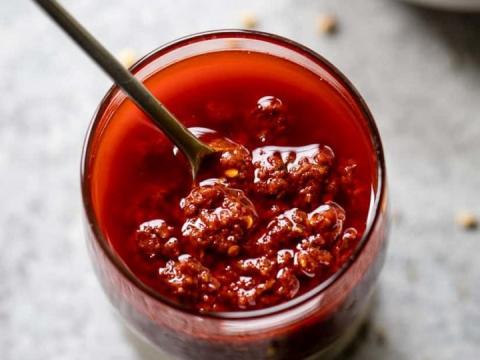
Harissa Is the Spicy Sauce That Will Liven Up Any Dish
If you like hot sauce, you need to get your hands on this complex condiment.
By Chris Malloy
The chile pepper has found its way into so many dishes, sauces, and specialties. In North Africa, especially in Tunisia and Algeria, red chiles often become harissa, an everyday condiment used widely in this part of the world. If you’re a fan of heat or layered flavor, harissa should be on your radar and in your fridge. Here’s why.
What Does Harissa Taste Like?
Compared to your average big-brand hot sauce, harissa brings another dimension. Like hot sauce, the focus and main ingredient is chiles. But harissa combines chiles with added spices. Cumin, caraway seeds, and coriander are some common additions. The precise makeup of the added spicing varies from place to place. But in any true harissa, these spices create a duskier, bolder pepper condiment.
In a harissa, an herb like mint might be lightly used with these spices. These ingredients make harissa less of a neutral addition than most hot sauces, and slightly more of an add-on with its own distinct personality.
A quick, careful tip-of-the-spoon taste of harissa from the jar (or tube!) will reveal these flavor differences. It will also reveal different textures.
One of the main ingredients in harissa is olive oil. Jars are commonly finished, right before sealing, with a last pouring of olive oil on top. This gives it a creamy mouthfeel and a touch of a fatty lushness. That the peppers have been pasted rather than liquified accentuates this feeling, giving harissa the body not of a runny sauce but of a spread with a slightly velvety nature.
Since the chile first traveled through colonial channels from Spain and Portugal to North Africa, harissa has been used liberally on many local dishes. It’s a go-to condiment in these southern Mediterranean countries—just like ketchup, mustard, or mayo in the U.S. In North Africa, it’s used on couscous, grains, sandwiches, and eggs. It has a sharply defined flavor profile, but one that can lift all kinds of dishes.
One of the good things about harissa is that, finished with olive oil, it keeps nicely in a jar. Store-bought varieties can taste great, even on the affordable end.
Another good thing is that you can use harissa more widely than a condiment like ketchup or mustard. You can add a spoonful of harissa to a marinade, giving your meat a slight kick. On the other end, you can finish cooked chicken, pork, beef, or lamb with careful smears of harissa, layering new chile-and-spice-based flavors that go smoothly with the warm juices and charred bits.
Warning: when using harissa as a simple condiment, be prudent. Some pastes are hot-hot and can overwhelm the food you’re trying to simply enhance. A little harissa goes a long way. Before spooning red paste from the jar, give the jar a quick stir, that way the olive oil integrates and you get a more even portion.
How to Use Harissa
The better question might be: what doesn’t go well with harissa?
Spoon or squeeze harissa onto and into shakshuka, burgers, stir-fry, chickpea and butternut squash stew, or roasted pumpkin soup. The food of North Africa and Morocco. Grilled and roasted meats. Spanish tortilla. Mix it into aioli as a dip for fried foods. Use harissa for the same purposes you use hot sauce and then some.
With a chile paste so potent and versatile, the only limits are those of your imagination.
